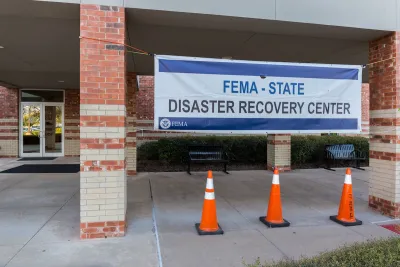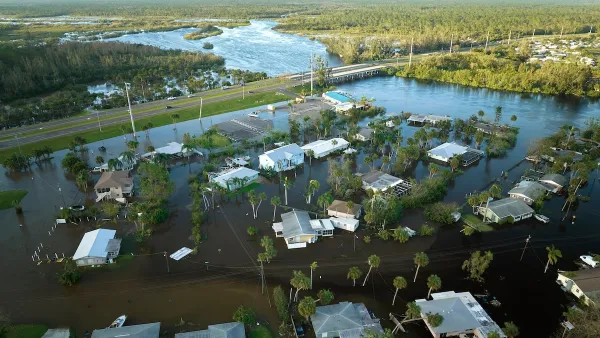The legislation acknowledges the impact of cumulative damage and expands access to funds for communities adjacent to storm-hit states.

A proposed federal bill would let more communities access federal disaster relief dollars, reports Ysabelle Kempe in Smart Cities Dive.
The bill would allow communities “contiguous with a disaster area” that are not in the same state where a disaster was declared access federal funding.
“The Regional Impact of Disasters and Emergencies Relief, or RIDER, Act would also modify the Federal Emergency Management Agency’s definition of a “major disaster” to include cumulative impacts of disasters over a yearlong period, even if none individually meet the threshold for federal relief,” Kempe adds.
The bill aims to assist communities that are often excluded due to technicalities and eliminate the mismatch between federal disaster relief rules and local conditions. According to the bill, the changes “would improve the distribution of disaster relief funds by recognizing that disasters do not neatly follow county or state lines.”
The legislation acknowledges that the cumulative impacts of repetitive storms in one area can pose the same dangers as major single storms.
However, Kempe points out that FEMA has been struggling to keep up with the demand for assistance. In early August, FEMA began operating on an “immediate needs funding” basis in August before Congress authorized an additional $20 billion to keep the agency operating through the hurricane season.
FULL STORY: Bill aims to help disaster-struck communities excluded from federal relief

National Parks Layoffs Will Cause Communities to Lose Billions
Thousands of essential park workers were laid off this week, just before the busy spring break season.

Retro-silient?: America’s First “Eco-burb,” The Woodlands Turns 50
A master-planned community north of Houston offers lessons on green infrastructure and resilient design, but falls short of its founder’s lofty affordability and walkability goals.

Delivering for America Plan Will Downgrade Mail Service in at Least 49.5 Percent of Zip Codes
Republican and Democrat lawmakers criticize the plan for its disproportionate negative impact on rural communities.

Test News Post 1
This is a summary

Test News Headline 46
Test for the image on the front page.

Balancing Bombs and Butterflies: How the National Guard Protects a Rare Species
The National Guard at Fort Indiantown Gap uses GIS technology and land management strategies to balance military training with conservation efforts, ensuring the survival of the rare eastern regal fritillary butterfly.
Urban Design for Planners 1: Software Tools
This six-course series explores essential urban design concepts using open source software and equips planners with the tools they need to participate fully in the urban design process.
Planning for Universal Design
Learn the tools for implementing Universal Design in planning regulations.
EMC Planning Group, Inc.
Planetizen
Planetizen
Mpact (formerly Rail~Volution)
Great Falls Development Authority, Inc.
HUDs Office of Policy Development and Research
NYU Wagner Graduate School of Public Service





























